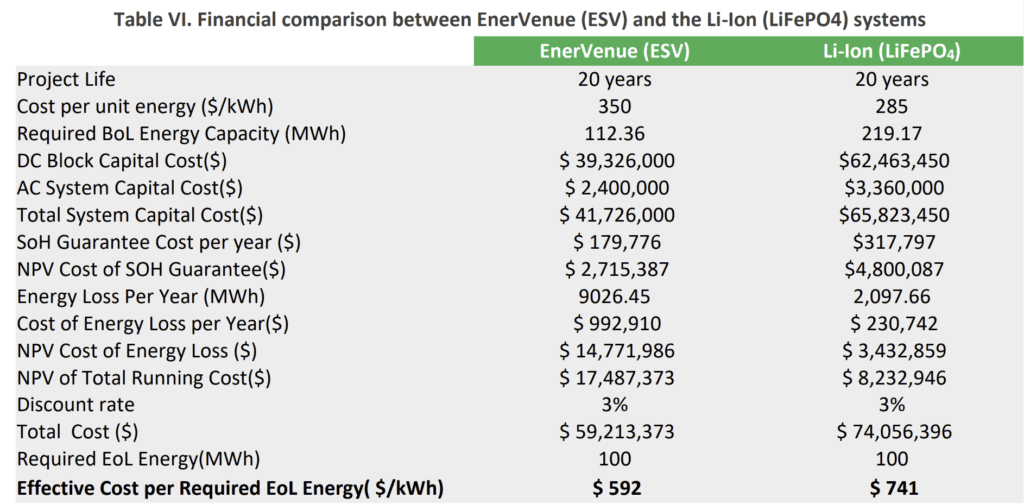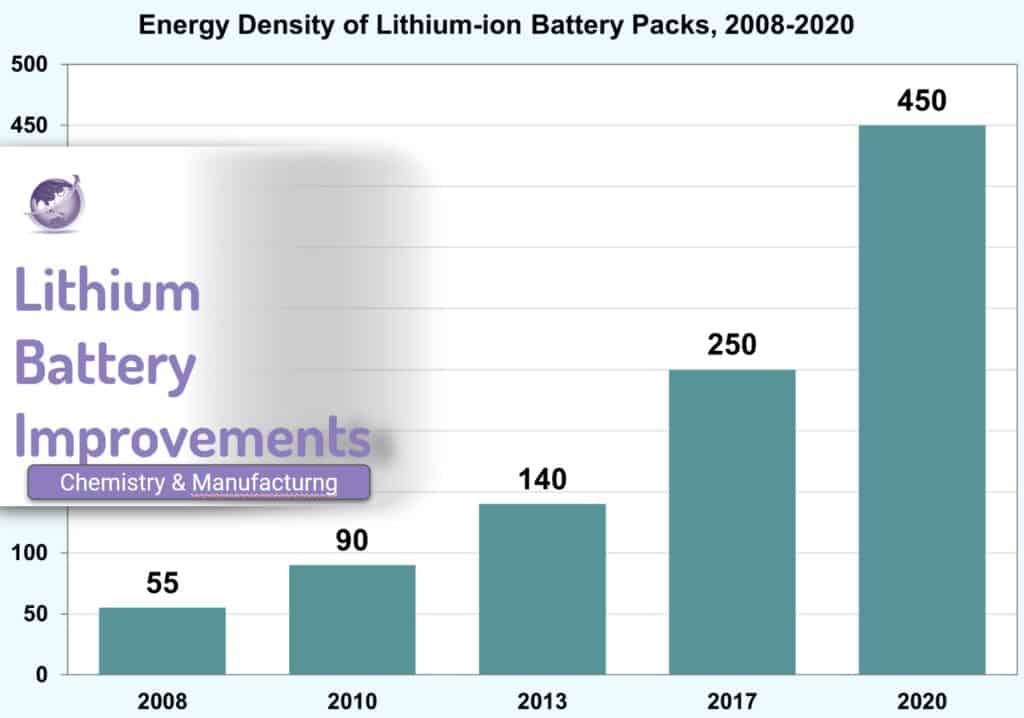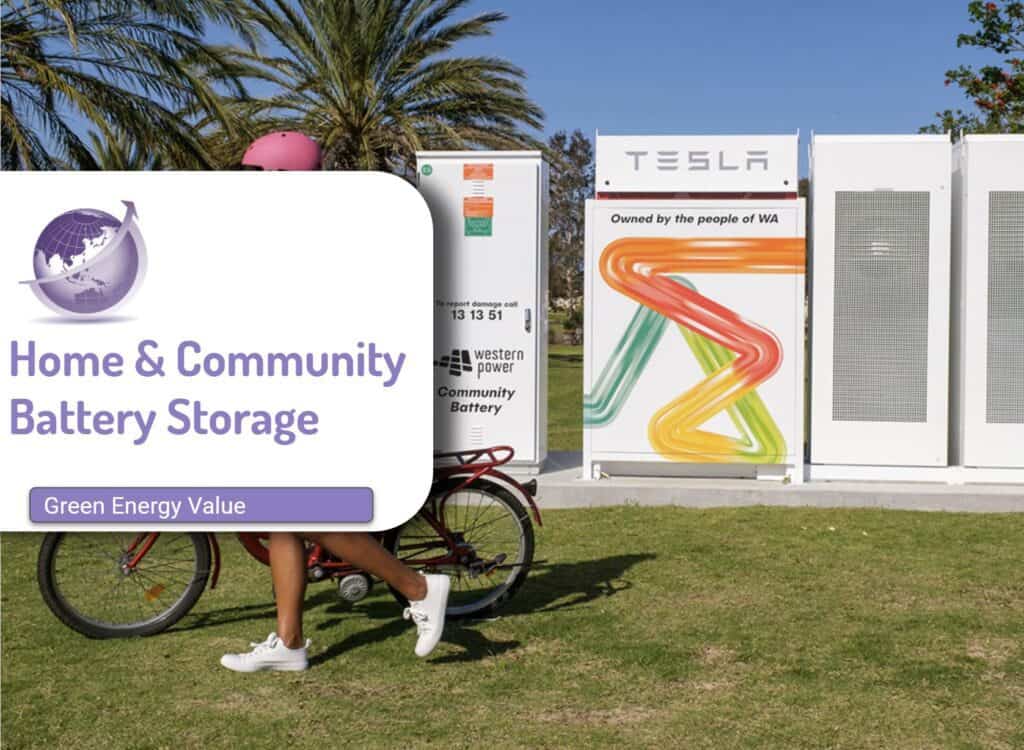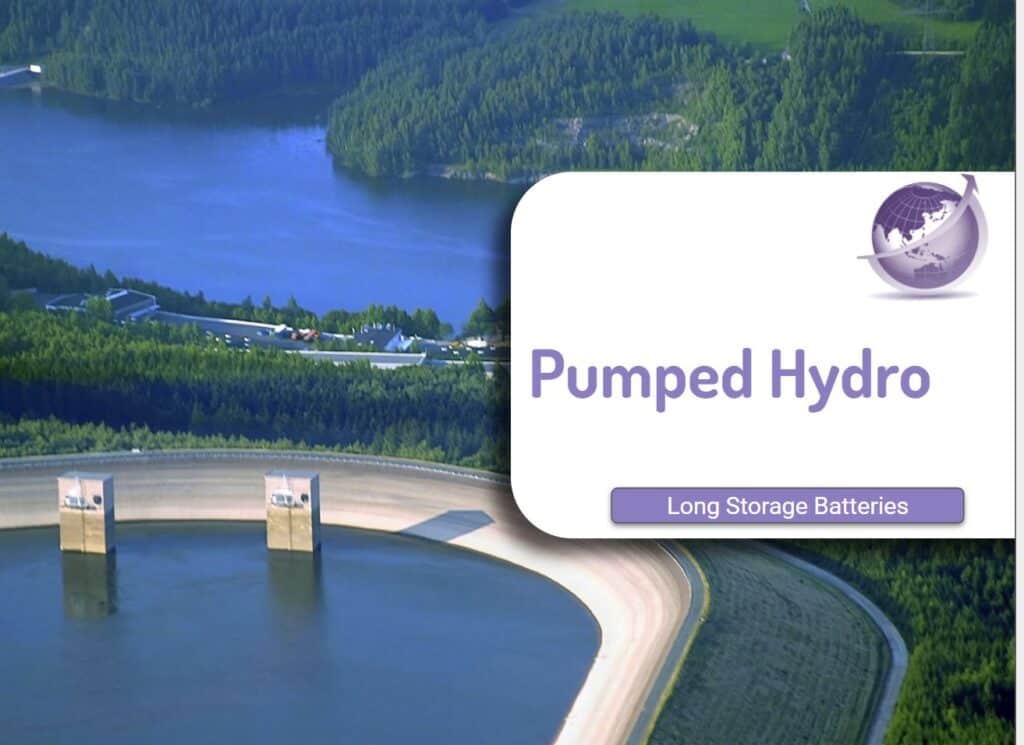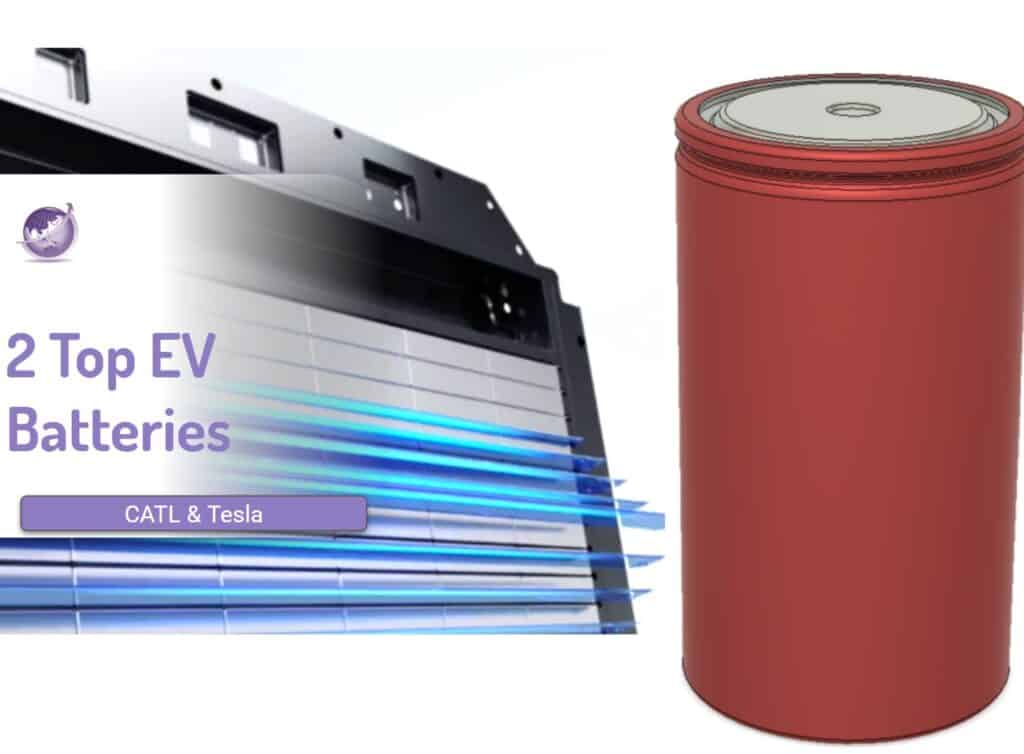Enervenue have taken a NASA technology and commercialised the Nickel hydrogen battery which is a steel vessel, with up to 1.2kWh per vessel. These are stacked into a container or similar. Key features include
- 30,000 cycles
- 3 times daily cycle
- Less than 8% degradation after 20 years or 20,000 cycle
- No fire suppression needed
- No risk of thermal runaway
- No risk of fire propagation
- Significantly superior capacity degradation characteristics than equivalent designed Li-Ion (LiFePO4) system.
- DC round-trip efficiency (RTE) of 90.25% compared to a Li-Ion (LiFePO4) system’s 97.68%,
- No requirement to oversize battery capacity compared with alternative technologies
- No HVAC required.
Commercialisation Progress
They have raised money and are ramping up.
- The first phase of the project will encompass one GWh of annual production
- Construction of a 92,00 m2 facility on a 30ha site in Kentucky.
- Target 5GWh by 2025
- Expects to invest in excess of $1 billion to expand to more than 20 GWh per year by 2030.
- Has more than 7 GWh of customer commitments,
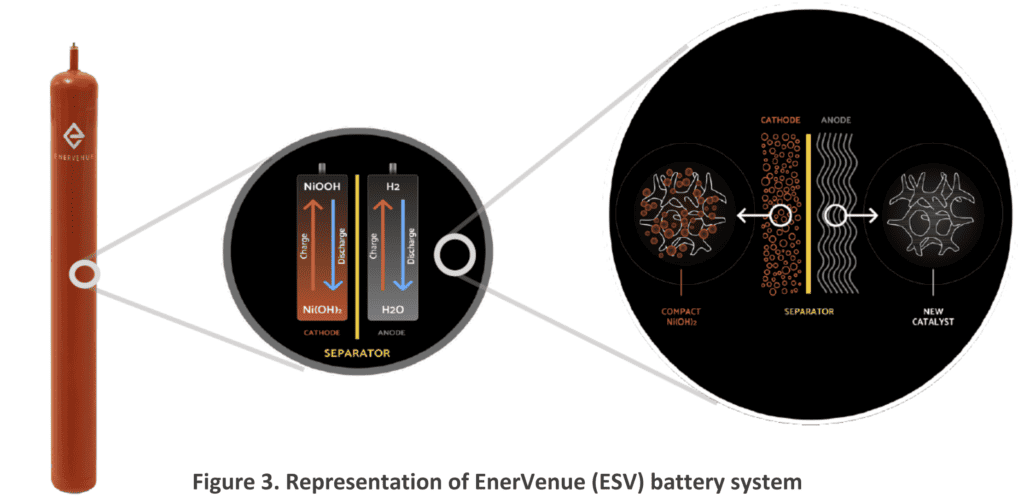

Low Degradation Key for Nickel Hydrogen Battery
A key feature of NiH battery is the less than the 8% degradation over 20 years that means that the system can be sized half the size of an equivalent LFP battery

Is the Battery Competitive?
The comparison with a LFP battery system has a number of challenging assumptions. The initial capital cost for a 112 MWh battery is higher. The cost over 20 years is 15% lower because the NH battery has less degradation over time.
- The analysis does not account for the continued downward reduction in battery costs. A decade would see the cost of batteries reduce by 2x. So in 10 years time, would it not be cheaper to expand the total system with a new battery, and there are dozens around.
- There is a premium for the cycling capacity. This may not be a requirement for a grid arbitrage systems.
